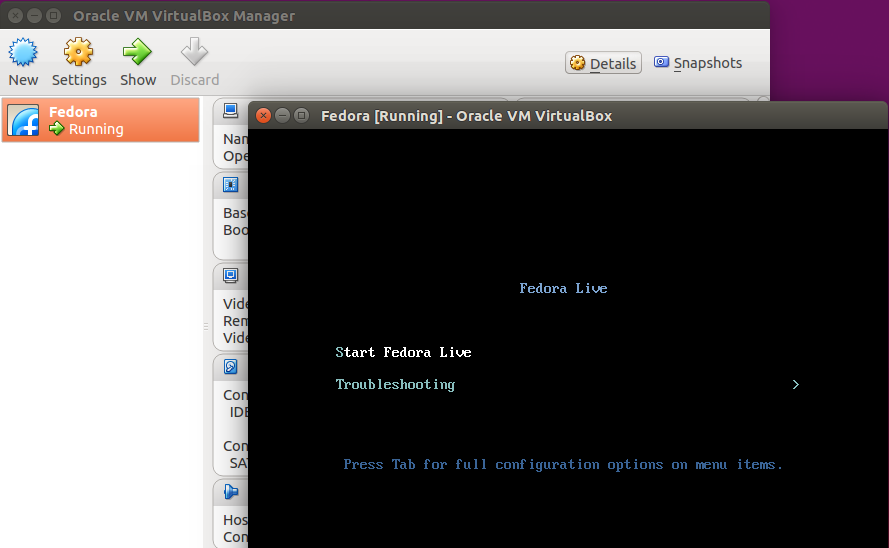

- #Linux live usb creator virtual box has virus portable#
- #Linux live usb creator virtual box has virus iso#
By default it boots with the persistence option to save any changes made in the Live environment.
#Linux live usb creator virtual box has virus iso#
Slax is available for both 32-bit and 64-bit machines and the ISO image of the latest stable version weighs in under 300MB. When you shutdown a Live session, Puppy offers to save all the changes inside a file that can optionally be encrypted for added security. Puppy Linux can run from all sorts of removable media, though it’s best used from a USB stick. For starters, the distro uses Joe’s Window Manager as its window manager together with the fox-filer file manager that gives it its distinctive appearance. However, it’s no surprise that the light distro skips over mainstream programs in favor of lightweight options. First-time users will be surprised that the tiny distro includes some programs that you wouldn’t find even in full-fledged distros.

You can easily swap out components including the kernel and various programs to create a streamlined Puppy.ĭespite its miniscule size, there’s no beating Puppy for out-of-the-box functionality and there’s an app for virtually every task that you can perform on a desktop. A key feature of the official Puppy releases is that they’re modular. Each of the different Puppy distros come with their unique features. Unlike most distros, Puppy Linux is not a single distro but rather a collection of several distros, some official and some put together by its community of users. Puppy is built from the ground up and has grown beyond its original mandate of resurrecting older hardware that had been rendered useless due to lack of support in other mainstream distributions. One of our all-time favorites, Puppy Linux is one of the first of the miniscule distros that had its first release way back in 2003. However, you do get the option to start a fresh session from the boot menu. By default, the live session is persistent, which automatically saves all changes made to the Live environment.

For example, you can use it to copy the entire live environment to RAM, which requires more than 768 MB of system memory, boot Porteus in text mode, initialize a PXE server, or access the PLoP boot manager. The Porteus boot menu offers some interesting options. The mechanism to transfer Porteus onto a USB is the same as Slax: loopback mount the ISO and copy its contents onto an EXT4 formatted disk before running a script from inside the USB to make it bootable. This is because the distro exists in a compressed state on the storage media and the familiar Linux directory structure is created on the fly during boot. The ISOs of most editions weigh in around 300MB each. Porteus is available as seven separate ISO images, each with a different desktop – from the heavyweight KDE and Cinnamon to the lightweight LXQt, LXDE and Openbox and others.

On writable mediums, Porteus will save all changes inside a folder and load them on subsequent boots.
#Linux live usb creator virtual box has virus portable#
Porteus is a portable distro designed and optimized to run from removable media such as a USB flash drive, SD card or even optical media like a CD. You can also flesh out the distro using mintInstall package manager. These are complimented by several traditional desktop apps as well such as the Firefox web browser. In the latest release, Ice now has support for isolated profiles for Firefox, Chromium, Chrome, and Vivaldi SSBs.Ī number of web apps are set up out of the box, including Microsoft Office Online, Google apps and which uses WebGL to provide a glorious 3D chess experience. The SSB webapps have a minimal browser interface and some of them really look well integrated into the desktop. Peppermint’s USP is the home-brewed tool called ICE, which can turn websites into web apps, technically known as Site Specific Browsers or SSBs, and roll them into the application menu. It also uses Xfce’s window manager, menu and panel, keeping to the traditional desktop metaphor, while still allowing a few modern conveniences like type-to-search in the menu. This is a fast and lightweight distro that uses the LXDE desktop, although its developers are quite happy to cherry pick elements from other desktops, such as the use of the Nemo file manager from Cinnamon for its handling of network shares. Peppermint is a lightweight Linux distro based mostly from packages in the Ubuntu repositories along with some key components from Linux Mint.


 0 kommentar(er)
0 kommentar(er)
